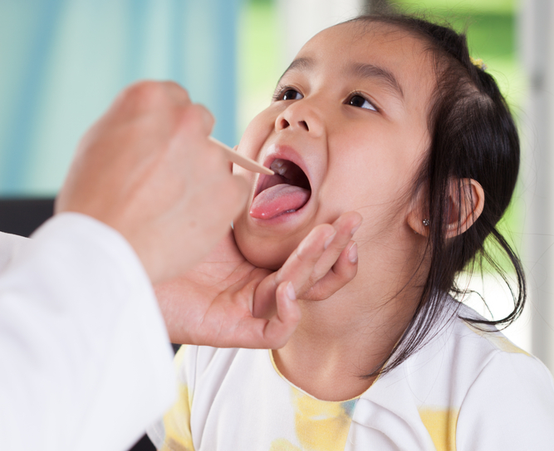
Kawasaki disease is a serious condition that causes inflammation of the blood vessels, including the coronary arteries which supply blood to the heart.
When a child has Kawasaki disease, they initially have a high fever that lasts for several days. Kawasaki disease symptoms include red, dry, cracked lips; a red ‘strawberry’ tongue; a rash; bloodshot eyes; and swelling and redness of the hands and feet.
Kawasaki disease may also result in serious, potentially life-threatening future heart problems in children with the syndrome. This can occur when Kawasaki disease causes inflammation in a child’s coronary arteries.
We aren’t sure what causes the inflammation, but it is thought in some cases to be an inflammatory response to common infections. If we can better understand the cause, this will improve the treatment and diagnosis of Kawasaki disease, as well as the related inflammatory condition that rarely follows COVID-19 in children.

Who does it affect?
Who does it affect?
- In Australia, on average, at least one child is diagnosed with Kawasaki disease every day
- The incidence of Kawasaki disease has doubled in preschool children in the last 25 years
- Kawasaki disease mostly affects children under the age of five and typically occurs between six months and five years. It occurs less frequently in older children and rarely in adults
- The disease is more common in boys and in children of North Asian ethnicity but is seen in all ethnic groups
- Even after Kawasaki disease treatment, one in 20 children affected develops problems with the blood vessels supplying the heart
Our Kawasaki Disease research
Our Kawasaki Disease research
Murdoch Children’s Research Institute’s Inflammatory Origins Group is the most active Kawasaki disease research team in Australia and is recognised internationally.
We have co-led key studies on how common Kawasaki disease is in Australia, how it is treated and some of the blood markers (signs) that may lead to better diagnosis and treatments.
Impacts of our research

Impacts of our research
- We have shown for the first time that there is evidence of long-lasting changes to the aorta (the main artery in the abdomen) in those with severe Kawasaki disease. This may indicate an increased risk of heart disease.
- Discovering that other markers (signs) of heart disease risk such as stiffness of the arteries, are not worse after Kawasaki disease.
- Revealing that the incidence of Kawasaki disease in Australia is much higher than previously thought and continues to increase. Kawasaki disease in children aged one to four years has doubled over the past 20 years. We co-led this research which is the nation’s most thorough and detailed investigation into the disease.
- Making important contributions and recommendations to Kawasaki disease treatment and policy regarding a Kawasaki disease-like condition that rarely follows COVID-19.
Our vision
Our vision
Kawasaki disease is serious, relatively common but poorly understood. We are hoping to find a diagnostic test and develop specific and more effective treatments through our ongoing Kawasaki disease research and collaborations within Australia and with other experts overseas.
Where to next?
Where to next?
We continue to take leadership roles in developing clinical guidelines and research on Kawasaki disease. We also are active in the rare but important inflammatory condition following COVID-19 (PIMS-TS or MIS-C) which shares many features with Kawasaki disease, although appears distinct.



